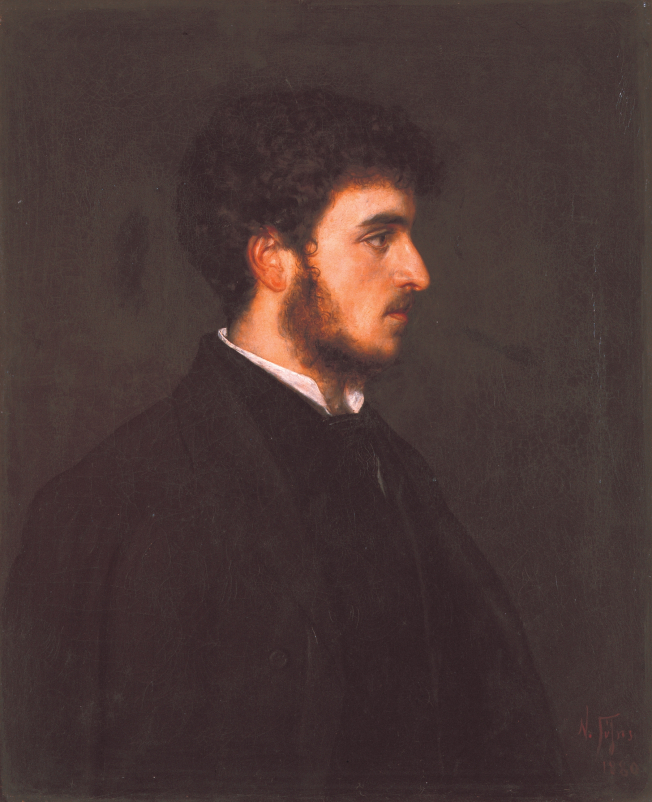Portrait of George Nazos, 1880

The Portrait of Georgios Nazos shows the artist's wife's brother, Director of the Athens Odeion. In a posture not all that common for the painting of a portrait, Georgios Nazos is shown by the painter in profile, against a dark background, which is almost identical with his black clothing. Only his face shines in the light, which not only brings out descriptive details in the eyes, the hair, the forehead, the beard, but is the realistic feature by which the mood of the moment is captured. The result is that the likeness of the portrait to the subject is revealed not as an external surface property, but as an expression of his inner world and of his spiritual make-up.




